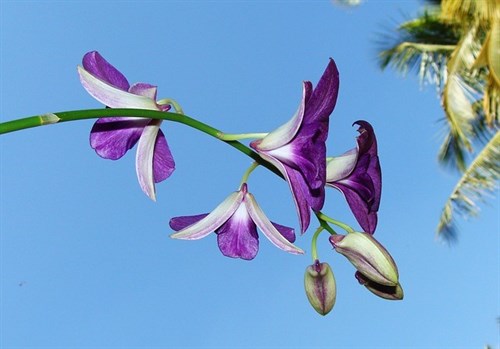How to grow Australian native orchids in your backyard

People often think that when designing a garden with native Australian plants you must sacrifice colour. In fact there are 24,000 species of native plants and that includes 800 native orchids.
Orchids are much loved because of their beautiful assortment of colours and scents. Australian native orchids are a perfect addition to any Australian garden.
There are registered hybrids to choose from and whole garden nurseries dedicated to offering plants and advice.
If you are a passionate gardener and want to try your hand at growing these beautiful specimens, this guide may be a help to you.
Growing Australian native orchids
It’s important to look for orchids that are native to your area or will suit the climate where you live. While a lot of orchids prefer the tropical environments, there are many that will grow in a colder climate.
If you really want to grow a variety that won’t take to your region’s climate, you can always invest in a greenhouse or cold room.
Orchids usually love coastal, humid environments. They need a lot of light and ventilation to thrive. Don’t let them sit out on a windy day or in the rain during winter.
Place them in pots under a shade cloth or on your verandah.

The two types of orchids:
1. Terrestrials
Terrestrials are the most common type of Australian native orchids and make up 75 per cent of our native orchids.
They grow in the ground and are usually deciduous, meaning they diminish to an underground tuber during the dry, Australian summer and then flower in cooler, moist periods.
Terrestrial orchids are well known for being a challenge for the average gardener, but there are easier varieties like the colourful Diuris varieties, which are great plants for hanging planters.
2. Epiphytes
There aren’t as many varieties of Epiphytic orchids as there are terrestrial, but they are the most popular type to plant and grow.
Epiphytes, otherwise known as tree huggers, attach themselves to trees and rocks and use them as support. They grow mostly in the eastern coastal region, from northern Queensland to Tasmania.
Growing epiphyte orchids is much easier than growing terrestrials.
To begin you should use something with good drainage like gravel, wood chips or charcoal. Avoid soil and your average potting mixes.
Tie the orchids onto rocks and trees that don’t shed too much bark. You can even grow your epiphytic orchids on wood slabs and they will root themselves onto the host.
If you live in a temperate climate, epiphytic Dendrobiums have many hybrids and are perfect for your climate.
To propagate Dendrobiums, divide the root clumps with your fingers and keep four or five stems for each clump.
Choosing orchids
- When choosing epiphytic orchids take a look at the Dendrobium Bardo Rose. It has pink and mauve flowers with a beautiful perfume. It grows on almost anything and works well in temperate climates.
- Rock Orchids (Dendrobium Speciosum) have white and pale yellow flowers that bloom in spring while Pink Rock Orchids (Dendrobium Kingianum) are the most popular epiphyte and can come in a variety of colours, from pink, white and red to purple.
- The Tongue Orchid (Dockinillia Linguuformis) has white and cream flowers. It isn’t suited to pots and grows best on a wood slab or cork.
Looking after orchids
- Fertilise epiphytic native orchids from October to April with a dedicated orchid fertiliser or slow release fertiliser in pellet form.
- During summer you should water native orchids daily, but in winter try to only water them once every couple of weeks.
- Don’t overwater them! Make sure they avoid getting too much rain during winter, otherwise their newly forming buds may drown.
- Spray your orchids with aphicide to keep aphids from eating your flower buds. Also spray them with scale control spray to prevent scale from taking over.
Australian native orchids can certainly offer a splash of colour and beauty to your native garden. They can also be a great way to get maximum beauty for minimum effort, since they may already be well adapted to the climate. And that makes them a perfect addition to your garden.
To find more great tips on gardening and design, please visit the Australian Outdoor Living website here.
Related links:
8 ways to make your home more sustainable today
Houseplants that can survive dark corners
Tips for gardening on uneven ground
